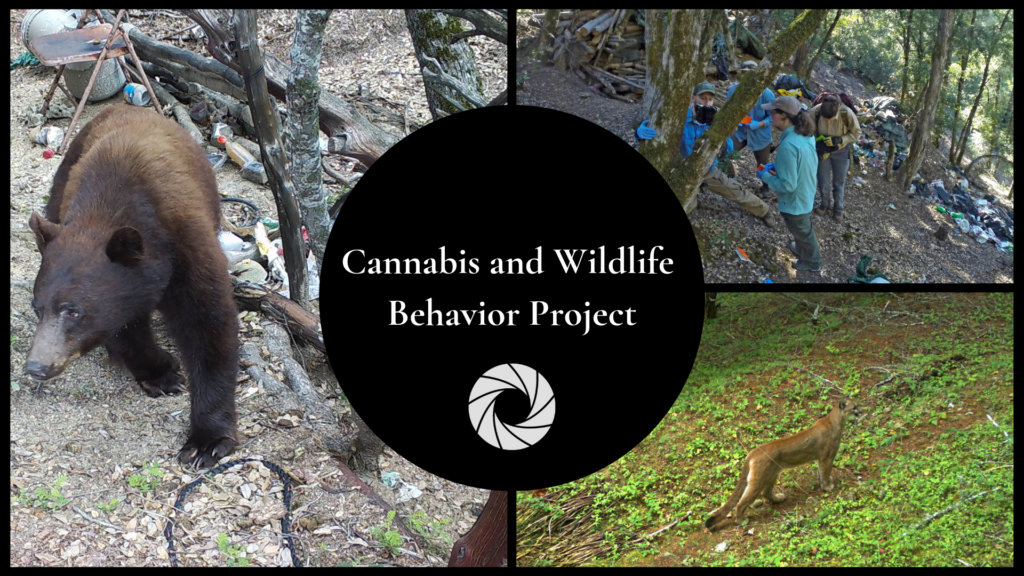 Cannabis cultivation sites can entice wildlife due to novel olfactory, visual and auditory stimulations cultivators bring to the location. Regrettably, these sites pose serious risks to wildlife through intentional and inadvertent poisoning and poaching, and habitualize wildlife to humans. Furthermore, cultivators manipulate the habitat by fragmenting or generating edge that may facilitate agonistic species to interact which would normally be separated by unmanipulated forest. Many wildlife species have extensive home ranges where several cultivation sites may be littering their activity areas. One way of monitoring species activity and the interactions between species is through the use of remote digital camera systems. These systems use both movement and temperature as triggers for photos and thus allow IERC researchers to capture not only what species are present, but potentially, if a specific individual visits a site.
Cannabis cultivation sites can entice wildlife due to novel olfactory, visual and auditory stimulations cultivators bring to the location. Regrettably, these sites pose serious risks to wildlife through intentional and inadvertent poisoning and poaching, and habitualize wildlife to humans. Furthermore, cultivators manipulate the habitat by fragmenting or generating edge that may facilitate agonistic species to interact which would normally be separated by unmanipulated forest. Many wildlife species have extensive home ranges where several cultivation sites may be littering their activity areas. One way of monitoring species activity and the interactions between species is through the use of remote digital camera systems. These systems use both movement and temperature as triggers for photos and thus allow IERC researchers to capture not only what species are present, but potentially, if a specific individual visits a site.
Objective: IERC scientists have deployed over 80 remote camera systems at cannabis cultivation sites throughout California. Our goal is to identify the many wildlife species that use the different features of these sites and monitor if restoration efforts affect wildlife visitation. This method of documentation provides insight into what species might visit and suffer direct risks from cultivation sites, and also provides visual evidence on how species may be encouraged to interact that normally would avoid each other.
Time Frame: IERC initiated this project in 2014 and it will be completed in 2020.
Project Support: United States Fish and Wildlife Service, California Department of Fish and Wildlife, Plumas National Forest
